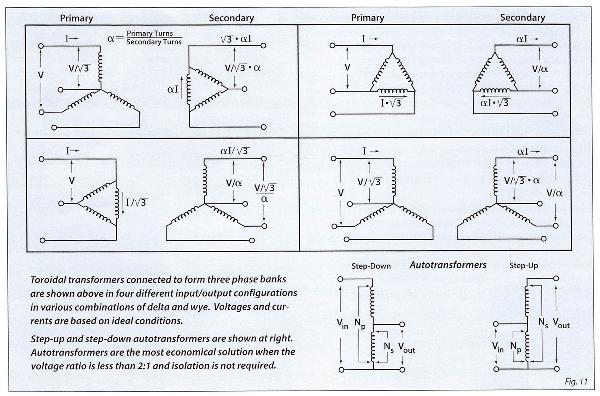Toroidal power transformers are popular for their low radiated magnetic field and comparable size & weight to VA rating. Advantages of a Toroidal Power Transformer over other types of transformer platforms are many. This is especially true of Toroidal Power Transformers compared to typical laminated transformers. The advantages flow to the bottom line; improved performance and lower cost. Learn more by viewing our webpage Advantages of Toroidal Power Transformers.
Bicron’s power range for Toroidal Power Transformers covers 20VA to 10,000VA. Choose from our selection table below for a Standard Toroidal Power Transformer model or complete and return our Toroidal Power Transformer Design Worksheet to specify the custom transformer model that meets your needs.
Whether you select a standard or custom model we will contact you directly to review all performance requirements needed to complete a quotation. Common factors we will review with you include size, power, rating, mounting, height/diameter ratio, lead configuration, agency approval type, insulation and shielding.
Visit our Technical Guide for Bicron Toroidal Power Transformers for design and application criteria important to the use of our products.
Please clarify your choices from the following options when selecting a Bicron Toroidal Power Transformer:

| Part Number | 50/60Hz Power (VA) | Regulation Full Load (%) | 60Hz Power (VA) | Approx. OD (in.) | Approx. Height (in.) | Approx Weight (lbs) | Datasheet |
|---|---|---|---|---|---|---|---|
| BEC-TPT101 | 20 | 25 | 24 | 2.7 | 1.5 | 0.80 | |
| BEC-TPT102 | 30 | 25 | 36 | 2.7 | 1.9 | 1.20 | |
| BEC-TPT103 | 40 | 20 | 48 | 3.5 | 1.5 | 1.5 | |
| BEC-TPT104 | 60 | 15 | 72 | 3.5 | 1.8 | 1.9 | |
| BEC-TPT105 | 80 | 13 | 96 | 4.2 | 1.7 | 2.1 | |
| BEC-TPT106 | 100 | 11 | 120 | 4.2 | 1.9 | 2.3 | |
| BEC-TPT107 | 160 | 10 | 200 | 4.7 | 2.0 | 3.1 | |
| BEC-TPT108 | 230 | 8 | 275 | 4.7 | 2.5 | 5.5 | |
| BEC-TPT109 | 330 | 7 | 400 | 4.8 | 3.1 | 6.8 | |
| BEC-TPT110 | 400 | 7 | 480 | 5.7 | 2.6 | 7.5 | |
| BEC-TPT111 | 530 | 6 | 640 | 5.7 | 5.2 | 9.8 | |
| BEC-TPT112 | 600 | 5 | 720 | 5.7 | 3.5 | 11 | |
| BEC-TPT113 | 750 | 5 | 900 | 6.3 | 3.5 | 13 | |
| BEC-TPT114 | 1000 | 5 | 1200 | 6.3 | 3.8 | 16 | |
| BEC-TPT115 | 1200 | 5 | 1440 | 6.3 | 4.5 | 18 | |
| BEC-TPT116 | 1500 | 5 | 1800 | 7.9 | 3.5 | 21 | |
| BEC-TPT117 | 2000 | 5 | 2400 | 7.9 | 4.1 | 28 | |
| BEC-TPT118 | 2500 | 4 | 3000 | 8.1 | 5.1 | 34.5 | |
| BEC-TPT119 | 3000 | 4 | 8.3 | 5.3 | 36.5 | ||
| BEC-TPT120 | 5000 | ||||||
| BEC-TPT121 | 6000 | ||||||
| BEC-TPT122 | 7000 | ||||||
| BEC-TPT123 | 8000 | ||||||
| BEC-TPT124 | 9000 | ||||||
| BEC-TPT125 | 10000 |
Toroidal Power Transformers with power up to 10,000VA are available in configurations modified for size, input/output values, leads, shielding, mounting and other considerations. Please use our Toroidal Power Transformer Design Worksheet to specify your requirements and request a quote.

LINEAR POWER SUPPLY DESIGN
Typically, there are three system configurations used in conjunction with linear power supplies. The half wave (HW), the full wave (FW), and the full wave center tap (FWCT). Each configuration will have impact on the VA requirements of the transformer and the circuit components comprising the rectification and filtering. Please contact Bicron engineering for specific transformer parameters.
THREE PHASE SYSTEM BASICS
Three single phase transformers may be connected to form a 3-phase bank in the configurations shown. Also shown are the voltages and currents based on ideal conditions. The VA rating of each transformer is one third the total system regardless of the selected configuration. The voltage and current ratings of each transformer is, however, configuration dependent.
AUTOTRANSFORMER BASICS
The same transformation of voltage and current can be obtained with a single winding autotransformer as with the normal two winding transformer. There are two major differences:
Bicron Electronics features power transformer designs for high-frequency applications including “corona-free” technology and high isolation, and toroidal power transformers up to 10KVA. Our current sensing transformers are high-efficiency and include self-energized models for switchgear and power distribution monitoring applications.